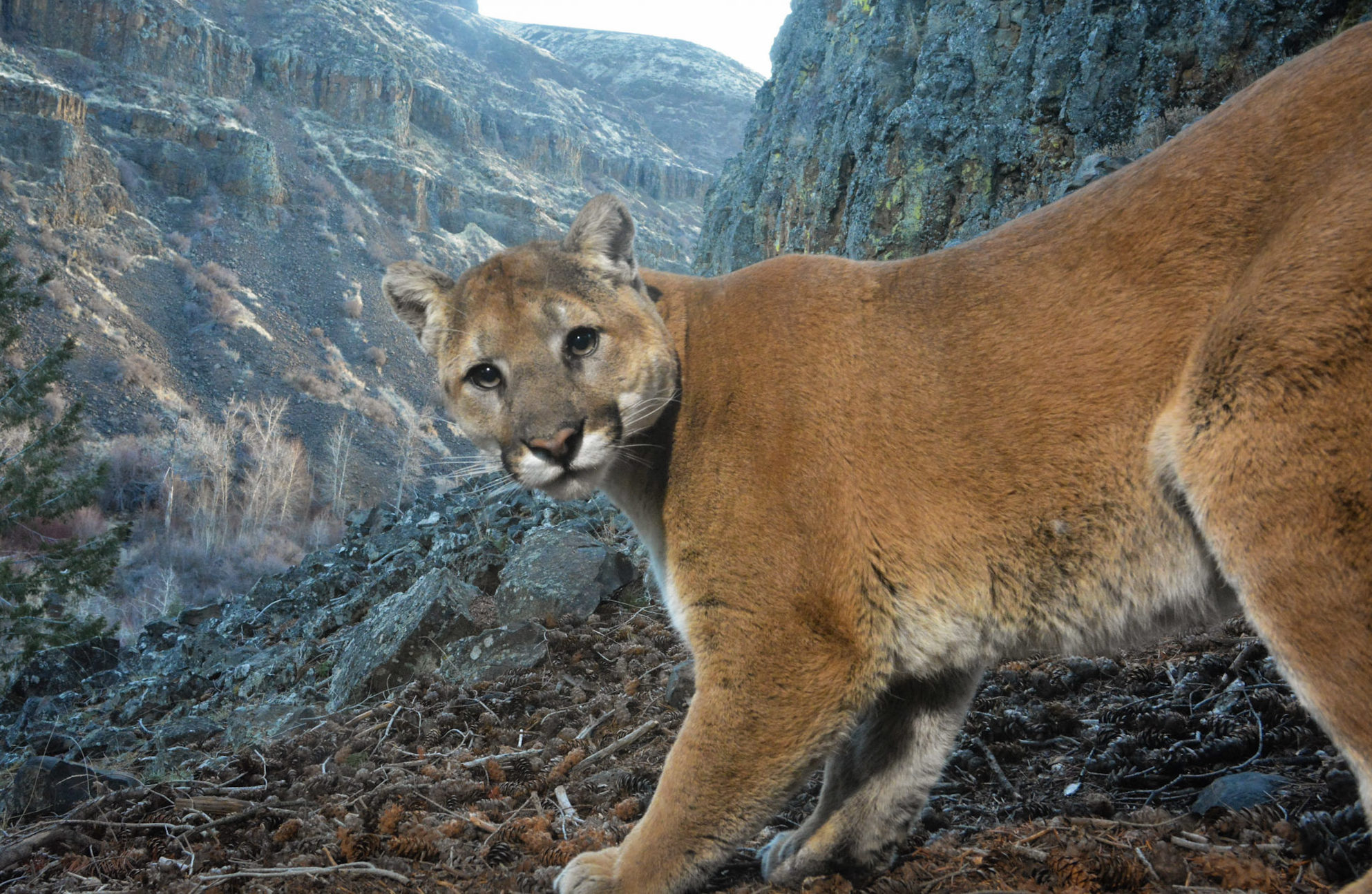Coexistence Navigation:
What Is Coexistence?
On The Range
At The Homestead
In Your Backyard
On The Trail
Respecting Grazing Operations
For Pet Owners
In Your Backyard
Mountain lions sometimes venture through human populated areas to navigate the full extent of their territory, or to find a new territory if they are young and dispersing. After all, it is nearly impossible to completely avoid people in our modern world. For this reason, most state wildlife agencies do not consider the mere presence of a mountain lion in an urban area to be a threat, as long as it does not linger.
Occasionally, mountain lions do linger in or repeatedly return to urban areas. This generally occurs when the mountain lion has identified a consistent food source, such as urban deer. While rare, unprotected pets or livestock can also be seen as food. The best thing we can do to keep both ourselves, our animals and our local mountain lions safe is to discourage mountain lions from lingering. Mountain lions in urban areas can be hit by cars or lethally removed when they come too close to people.
Fortunately, there are many steps we can take to make sure that mountain lions passing through urban areas will want to keep moving on. As a good starting point, it’s best to consider mountain lion biology and behavior. These big cats like consistent food sources and the ability to stay hidden. The following steps can help you transform your backyard into a place that does not offer food or hiding places to mountain lions.
Reducing hiding places: Mountain lions like to avoid detection, both from their natural prey and from potential sources of danger, including humans. For this reason, it is a good idea to reduce potential hiding places in your backyard. To do this, you can trim bushes and low tree limbs, clean up old wood or junk piles, and cover up crawl spaces with wire or other physical barriers.
Removing food sources: While it can be fun to see wildlife in your backyard, encouraging wild animals into your yard, either intentionally or unintentionally, can also bring in their natural predators including mountain lions. Food sources that attract wildlife include pet food, uncovered compost piles, exposed gardens, dirty barbeque grills and non-native plants that provide preferential forage for deer. By either bringing these food sources inside or covering them up adequately, you signal to wildlife that your backyard is a place to pass through, not hang out in.
Securing outdoor animals: If possible, it is always best to keep animals like dogs and cats inside at night. However, some backyard animals like chickens or goats will need to stay outside. For any outdoor animals, keeping them in a pen or enclosure that is protected on all sides will help deter any potential predators. Mountain lions can jump up to fifteen feet high, so a roof is always necessary for pens and enclosures. Keep in mind that mountain lions are most active at dusk, after dark, and dawn, so these are times when it is especially important to keep backyard animals secure.
Being mindful when letting out pets: Even if you have a fenced backyard or well-trained pets, it is best to never leave them outside unattended. If you can’t leave them inside, consider using a secure dog run, and bring them in at night. When you are letting pets out for bathroom breaks, it’s best to turn on lots of lights and keep them leashed rather than roaming around your backyard. You can also keep an airhorn by the door to scare off any wildlife. For more information on pets, visit our ‘For Pet Owners’ page.
Installing deterrents: As an extra measure, there are many wildlife deterrents on the market that can help spook mountain lions and other wild animals passing through, so they don’t want to linger. Motion-activated lights and sprinklers are both excellent options, and serve as an extra layer of home security as well.
Talking with your neighbors: If you are the only one on your block who is taking the steps mentioned above, there may be yards adjacent to yours that still encourage mountain lions and wildlife to linger. For this reason, it’s always a good idea to share your experience and ideas with neighbors. When we act collectively to coexist with wildlife, far more can be accomplished. You can also use apps like Nextdoor or listserves for your neighborhood watch to share wildlife coexistence tips with your neighbors.
If you do happen to see a mountain lion pass through, such as on your doorbell camera, consider yourself lucky. Unless there are repeated sightings, this should not be cause for concern. Enjoy the rare opportunity to see one of your local lions!


